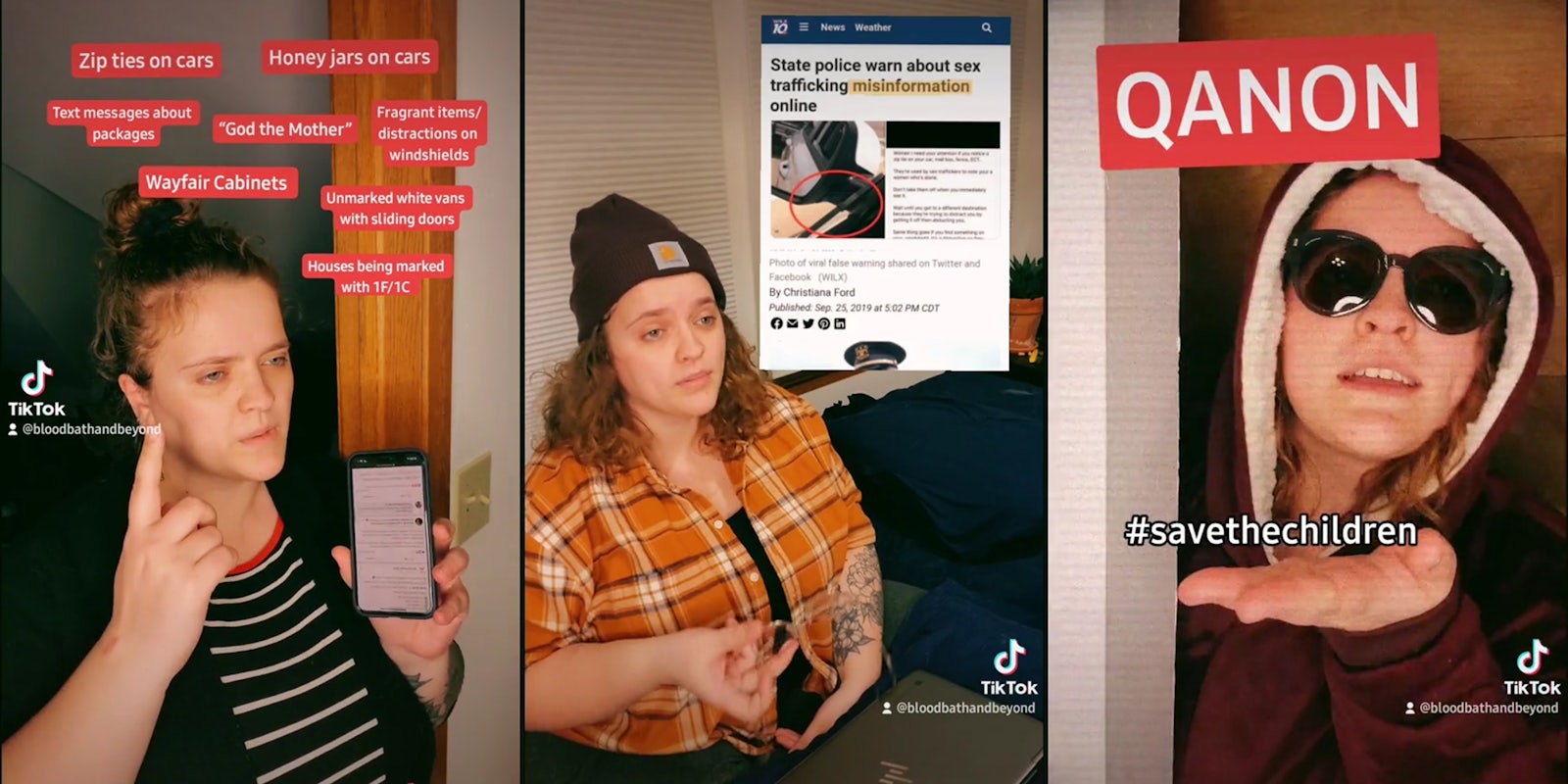In late March, TikToks started circulating claiming that Target is a “hub” for sex trafficking. Multiple women posted stories detailing being followed by strangers in Targets, or witnessing shady interactions, or being reminded of that time years ago when they were maybe almost trafficked.
One of the women who posted about her experience told Rolling Stone she did it to “raise awareness” about trafficking, a common, valid refrain in these kinds of videos. And while it is concerning that so many women have apparently had this experience, these stories often inadvertently recirculate misinfo about how sex trafficking works.
If there’s a trafficking hoax on TikTok, Jessica Dean has probably debunked it. Dean, who goes by bloodbathandbeyond, approaches debunks with a bit of sarcasm and humor, but is also empathetic to people who might have fallen for a hoax. She didn’t label the Target stories a hoax, just “general misinformation.”
The Target tale isn’t an anomaly. Last summer, a rumor about people hiding under cars to slash your Achilles tendon—an urban legend that goes back decades—was renewed, and stories about zip ties and symbols being used to mark potential targets have spread over the last year. Why are these stories so ubiquitous? Awareness has a lot to do with it.
“I think one of the reasons it’s such a pervasive problem on TikTok,” Dean says, “is that we are currently living through a time where we are more aware than ever of this idea of sex trafficking being hidden in plain sight. Women are constantly living on the edge, worried about what might happen to them when they walk home alone at night.”
Dean, who works as an actuarial analyst, says she receives the most pushback on videos about QAnon, a conspiracy theory that has grown on TikTok despite the company’s vows to crack down. It’s also muddied people’s understanding of trafficking.
Dean’s beat happened by chance: She started using TikTok to make Dungeons and Dragons content but abandoned that after seeing “sexist stereotypes and male gatekeeping take hold in that online space.” She found her “niche” last summer after being tagged in a TikTok alleging that scam texts about missed deliveries were being used by traffickers to access people’s location. After debunking that, she posted a more general video about the clickbait language often used in these TikToks—”the newest tool sex traffickers are using”—and explained why this kind of misinfo is so damaging. It got more than 1 million views.
Since then, Dean has assessed the Wayfair and God the Mother trafficking hoaxes, the Mattress Firm proliferation, and called out other accounts spreading bad info. Coincidentally, one of her most popular videos isn’t about trafficking, but the difference between East and West coast butter.
Sex trafficking facts vs. myths
While many of these almost-trafficked stories cite strangers, according to a 2019 report from nonprofit Polaris Project, the top recruitment tactic for sex trafficking was “intimate partner/marriage proposition,” followed by “familial” and “job offer/advertisement.” Victims are also often from vulnerable populations: immigrants, unhoused youth, and those struggling with addiction.
“Traffickers commonly prey on the specific vulnerabilities of their victim by making promises aimed at addressing the needs of their target as a way to impose their control,” a Polaris representative says. “They may establish strong psychological and emotional ties with their victims before forcing or coercing them to engage in commercial sex.”
The tags #sextraffickingawareness and #sextraffikingawareness were used on many of the Target videos, but a lot of the content under those tags, which have both been viewed millions of times, is filled with dubious info. TikTok’s community guidelines prohibit “Content that depicts or promotes human exploitation, including human smuggling, bonded labor, domestic servitude, sex trafficking, or prostitution,” but videos about that content land in a grey area: It’s harder to label a personal experience as misinformation.
Asked how it moderates this kind of content, a TikTok spokesperson told the Daily Dot: “As a global platform that both values and celebrates self-expression, we’re focused on fostering an environment where our community feels safe and comfortable sharing their experiences. And while we encourage our users to have respectful conversations about subjects that matter to them, we do not permit misinformation that causes harm to individuals, our community, or the larger public, and we take action against it when we detect it.”
Dean says she monitors a handful of accounts that typically post misinformation. One of them, dutchintheusa, is verified on TikTok and pushed the debunked “1F” hoax in December. The video has more than 10 million views.
These stories are cyclical: This isn’t the first time someone alleged they were going to be trafficked or kidnapped at Target (or Walmart, or Ikea). And while this misinfo doesn’t always originate on TikTok—Facebook is another major source—”raising awareness” and critical thinking have become independent.
If you are a victim of sexual assault or want more information on sexual assault, contact the Rape, Abuse & Incest National Network at 1-800-656-HOPE (4673).

